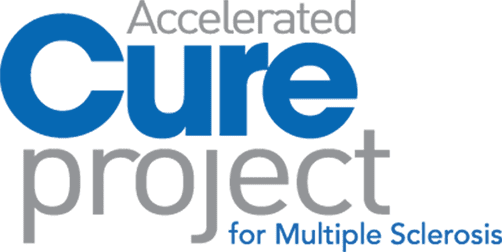Get in the Groove with MS It’s a well-known fact that exercising regularly has many benefits, including weight management, strengthening muscles and bones, and decreasing the risk of cardiovascular disease. Until recently, doctors recommended that people with MS avoid too much physical activity, believing that it could make fatigue and other MS symptoms worse. However, research has revealed that exercise can, in fact, improve MS symptoms. A 2016 review concludes that exercise is associated with a reduced relapse rate, lower lesion volume, slower progression of the disease, and improved performance on neurological tests in people with MS. According to a 2019 review, aerobic exercise and physical therapy can improve many areas of life for people with MS, including physical symptoms, mental health, and social functioning. A 2020 review found that physical exercise can significantly reduce fatigue in people with MS. Having established the fact that physical activity also helps people with MS, a number of questions remain. For example, what are the best exercises to do and how can they be done safely and effectively?
It’s important to consult a doctor before starting an exercise program. They may recommend working with a physical therapist who can design an individualized exercise program based on a person’s specific symptoms and goals. A physical therapist can also provide guidance on how to perform exercises correctly to avoid injury. Dr. Gretchen October 2021 Newsletter TM ACP Repository TM Hawley is a physical therapist and MS specialist that runs an online physical therapy program for people with MS called the MSing Link. In her words, “It’s very important for people with MS to exercise because it can help those with weaknesses or imbalances get stronger. I tell all of my clients to start as early as possible, even if the weakness they experience is minimal. The goal is, ideally, to get as strong as you can so if symptoms do progress, you might not notice it as much since you’re starting off at a much a stronger point.”
There are many different types of exercise, each of which holds unique benefits.
- Aerobic exercises are activities that increase the heart rate. This form of exercise is especially good for improving lung capacity, strengthening core muscles, and improving balance and coordination. A 2017 review suggests that low- to moderate-intensity aerobic exercise can also boost energy levels, mood, heart health and quality of life in people with MS who have mild to moderate disability.
- Progressive strength training involves lifting light weights and doing minimal repetitions at first, and slowly increasing the amount of weight or the number of repetitions over time. Research shows that strength training improves strength, balance and mobility in people with MS.
- Flexibility and stretching exercises help to lengthen muscles, increase joint mobility, and improve balance and posture. Researchers in Iran found that flexibility exercises such as stretching the muscles may lessen spasticity and prevent painful contractions in people with MS.
- Balance exercises involve shifting one’s center of gravity from side to side. There is evidence that this type of activity improves balance and reduces the number of falls in people with MS.
Research shows a number of other physical activities also help improve function and quality of life for people with MS.
- Yoga is a mind-body practice that incorporates various breathing, stretching, and meditation exercises. Yoga improves flexibility and strength while relieving stress and promoting a calmness. A small 2017 study found that an 8-week yoga program improved physical performance and quality of life for 14 adults with MS.
- Tai chi is a martial art that focuses on deep breathing and slow, gentle movements. A 2017 review concluded that Tai chi improves quality of life and functional balance in people with MS. Authors also suggest there is evidence that it helps with flexibility, leg strength, gait and pain.
- Kick boxing is a form of martial art that combines boxing with elements of karate, in particular kicking with bare feet. A small 2012 study showed a 5-week kick boxing program significantly improved gait speed and balance in people with MS who have mild to moderate levels of disability. No changes in health-related quality of life were observed.
According to Dr. Gretchen, “When someone asks me what’s the best exercise to do, I ask them what they are working toward. Is it improving foot drop? Is it finding more ease in tasks like getting in and out of bed? Their answer will determine what they need to do for exercise. It all depends on their personal goal.”
As we discussed in our April 2019 newsletter, neuroplasticity is the brain’s ability to form and reorganize connections between brain cells in response to new tasks. Dr. Gretchen believes that neuroplasticity is the reason that someone with MS actually can improve their strength, balance and walking. In her words, “Demyelination is a common cause for weakness. When a nerve does not transmit a signal to its intended target, that muscle will not work. Neuroplasticity is key because it prompts your brain to find a new way to make that muscle work. Understanding what neuroplasticity is and how it works is the first step to exercising effectively, otherwise it’s hard to stay motivated and consistent – increasing the likelihood that you’ll give up before you see results. The second step is making sure that your exercises are functional. People often exercise and feel like they’re getting stronger, but their function doesn’t improve. That may be because they’re doing the wrong exercises. For example, if someone’s goal is to improve their walking, you need to take the activity of walking and break it down into as many different movements as possible. Each of those movements are now your exercises. In order to take a single step forward, you first need to be able to shift your body weight forward, bend your knee, scoop your toes up, bring your knee up toward the ceiling, straighten your knee, put your heel down, and while you’re doing all of that you’re standing on one leg. That’s seven different movements. Therefore, that’s seven different exercises. In order to get neuroplasticity to work, for your brain to find and strengthen new pathways, it requires repetition. What that looks like is: doing those exercises as many times as possible cumulatively throughout the day. They can be done while standing, sitting or lying down. To maximize their functional effect, first determine the correct exercises to do and then find a position that they can be done successfully. That’s going to be a little bit different for each person.”
As a word of encouragement, Dr. Gretchen shares, “Trust the process. It can be difficult to believe in this process when you’re doing all the right things and you still don’t see progress or you don’t feel anything happening. Research shows that neuroplasticity does happen in people with MS. You really just have to trust and know that with every repetition you’re doing what it takes for your brain to find a pathway that works, resulting in more strength or improved mobility. And it takes time.” According to Dr. Gretchen, there are two common habits that can prevent a person with MS from improving. “Number one is touching furniture or walls while you’re walking. People often don’t even realize they’re doing it. The second habit is using your arms to help lift your leg. People often do this because their leg is weak. However, by using your arm for that movement, instead of your leg, you are telling your brain that your leg doesn’t need to work and you’re perpetuating the weakness. I tell people to attempt to use their leg muscles twice. If it still doesn’t work, go ahead and use your arms.”
Safety is of prime importance while exercising, not just for people with MS, but in general. It’s a good idea to avoid exercising in places with slippery floors, poor lighting, throw rugs, or other tripping hazards. It’s often helpful to use a wall, railing or a piece of furniture (something that won’t tip over) for extra stability when performing balance exercises. Choose activities that won’t make it likely to fall or try exercising from a seated position. According to Dr. Gretchen, “This still works your core and leg muscles, but you’re seated so it takes balance out of the equation and it’s just as effective.” It’s important to warm up by stretching and ease into an exercise routine. Knowing when to quit is also key. Anyone experiencing excessive fatigue, lightheadedness or dizziness, overheating, confusion, loss of balance or coordination problems should slow down or stop exercising completely. Cool down at the end of a workout to allow heart rate, body temperature and breathing to return to normal.
Overheating during exercise is a common problem for people with MS because it can make their MS symptoms worse. To avoid this, one can exercise in the early morning or in the evening, when it’s cooler. Staying hydrated can also help in this regard. Other helpful strategies include the use of cooling devices, wearing light exercise clothing, using fans or air conditioning to keep the exercise area cool or taking a lukewarm bath or shower before and after exercising. Exercising in water also helps prevent overheating and the feeling of weightlessness, combined with the mild resistance of the water, creates an excellent environment for low-impact exercising. Beyond swimming, it’s possible to perform many types of exercise in the water, including weightlifting, balance training, walking and stretching. Exercise is an effective means of rehabilitation in people with MS. It’s important for those living with the disease to communicate with their healthcare team about physical limitations or disabilities that may be limiting the things they would like to do. With the guidance of a physical therapist, one can develop an individualized exercise program to get stronger and, possibly, overcome them. Success depends on consistency and repetition. With both, future goals may just be in reach!


